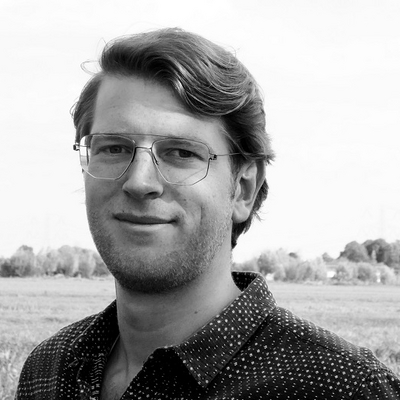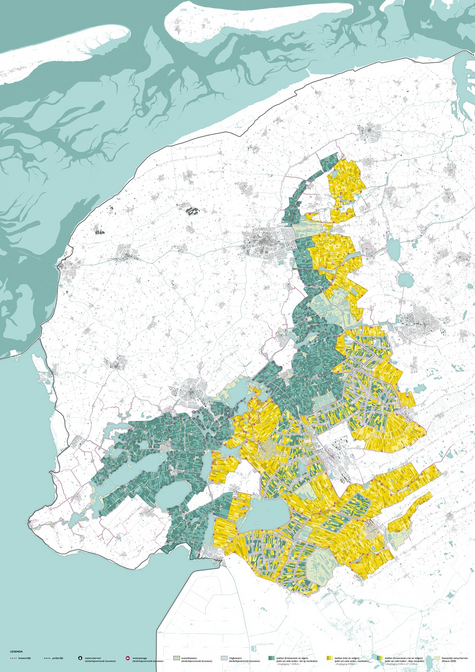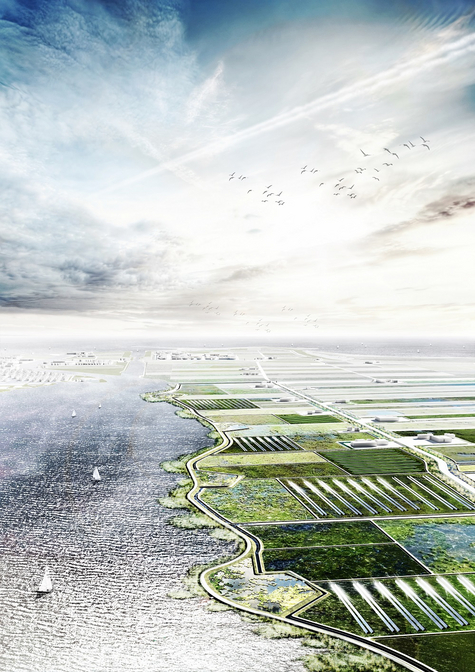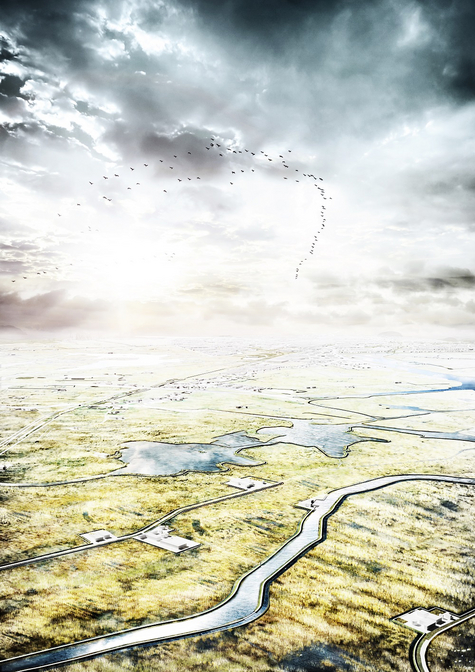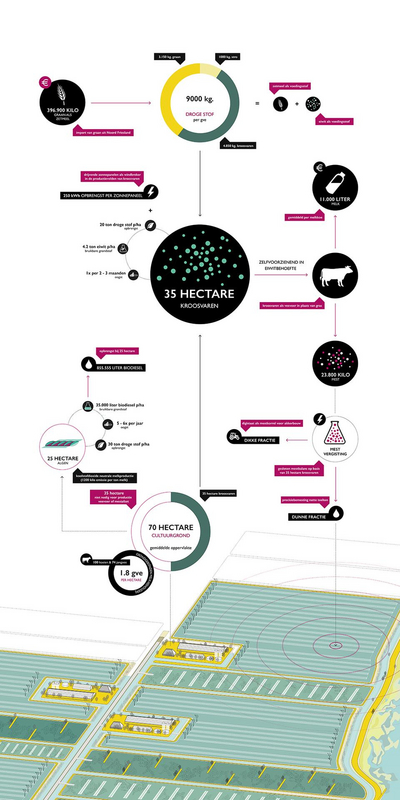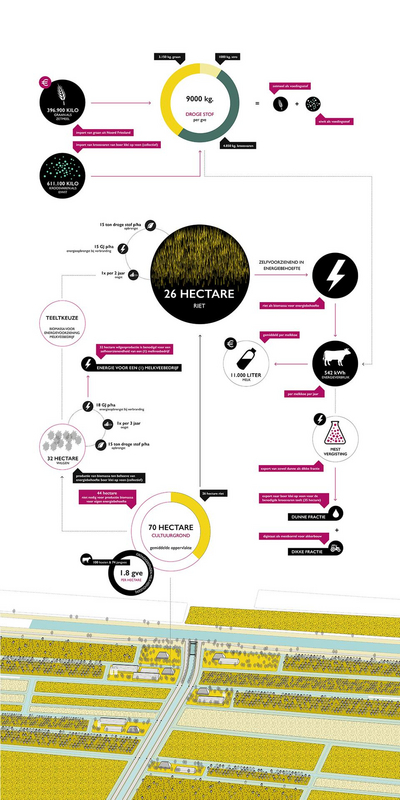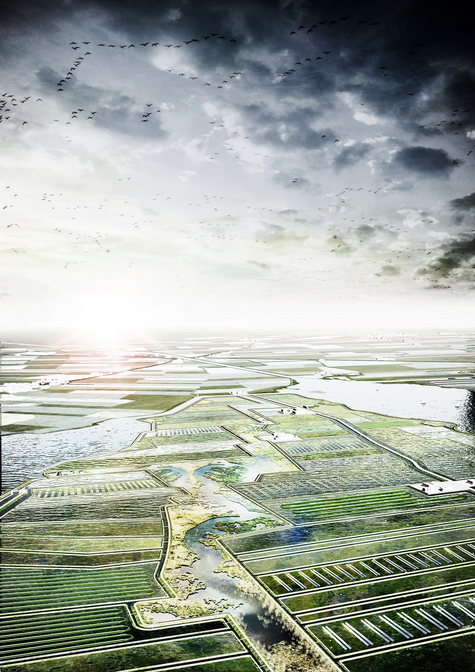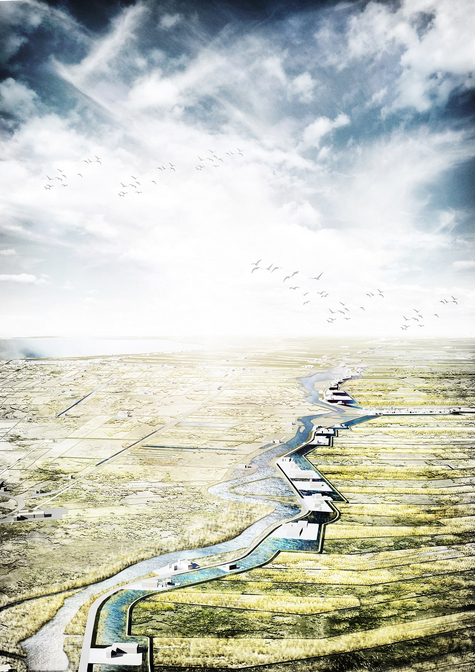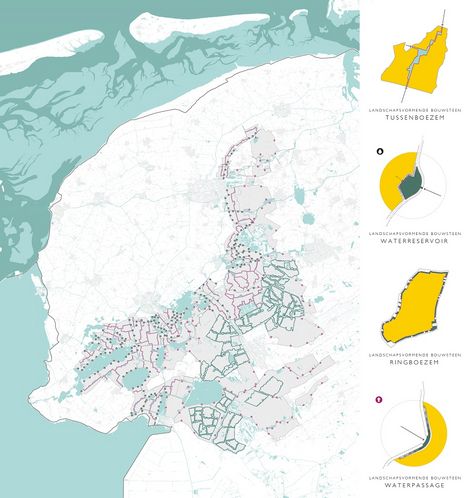Paul Plambeck
- Contact
- LinkedIn
Het Friese land vol eer en roem
The central question in this graduation project is how the Frisian peat meadow area can be transformed into an adaptive landscape with a natural balanced water regime, an innovative and circular agriculture and an intrinsic beauty as source of regional pride. Given the current climatic, economic and social problems, a desperate desire to hold on to the current polder landscape is untenable and calls for a radical transformation.
The intensive land use has, due to groundwater lowering, led to oxidation of the peat resulting in soil subsidence. As a result of peat oxidation, 4.2 megatons of CO2 is emitted in the Netherlands, of which the province of Friesland’s share is 1.7 megatons. The damage through soil subsidence to houses and infrastructure, as well as climatic developments, such as sea-level rise and salinisation, necessitate a robust and future-proof water system. The dairy farming in the Frisian peat meadow area is the world’s most innovative and efficient sector, and therefore an important spatial and economic carrier. Within the standard business system, an increasingly large imbalance is arising between cost price and milk price, as a result of which it’s becoming impossible to operate a business.
The guiding principle is a complete halt to soil subsidence and the preservation of dairy farming as spatial and economic carrier. This requires the complete rewetting of the peat soil, a circular and self-sufficient business system and a circular agriculture on the scale of the province of Friesland. The cows will be housed differently, a different crop for cattle feed and/or biomass will be introduced and the cycles of fee and manure will be closed. On the basis of the soil typology, two business models have been developed that, with their land use and vegetation, are in keeping with the natural water regime of the peat soil as marshy landscape. The first is a circular and self-sufficient business model of a clay later on a peat soil. The water level will, in that case, be above the existing ground level in order to protect the clay layer as top layer and counteract oxidation of the peat. The other business model makes use of a peat soil. Active rewetting creates a boggy soil. With the introduction of four landscape-forming building blocks, each polder can be individually transformed into an adaptive landscape, on the basis of which the individual farmer or the farmer collective can adapt their business system. In short, a transformation that not only keeps producing intrinsic beauty as source of regional pride, but as a result of which Friesland will remain independent and indispensable!
Graduation committee: Peter Veenstra (mentor), Nikol Dietz and Harm Veenenbosch. Additional members for the exam: Berdie Olthof and Roel Wolters.
